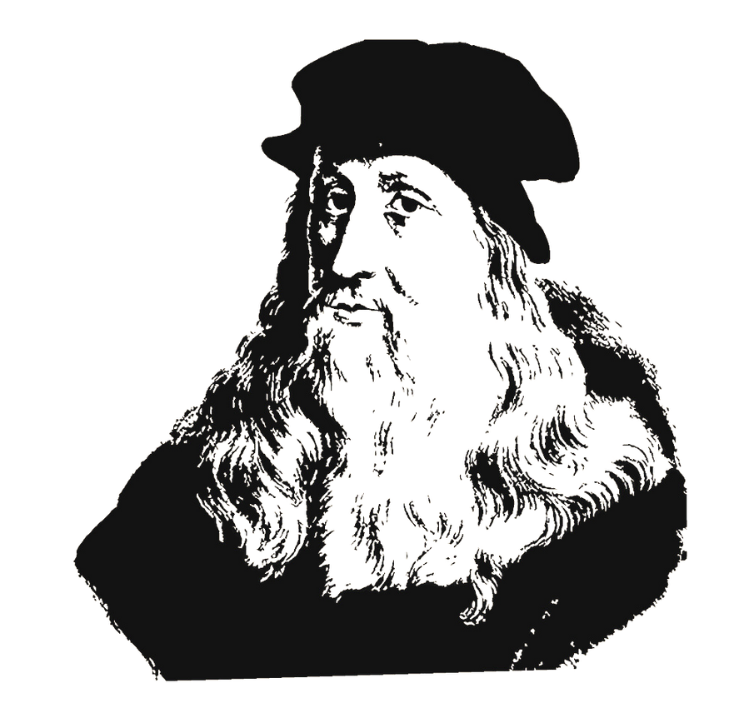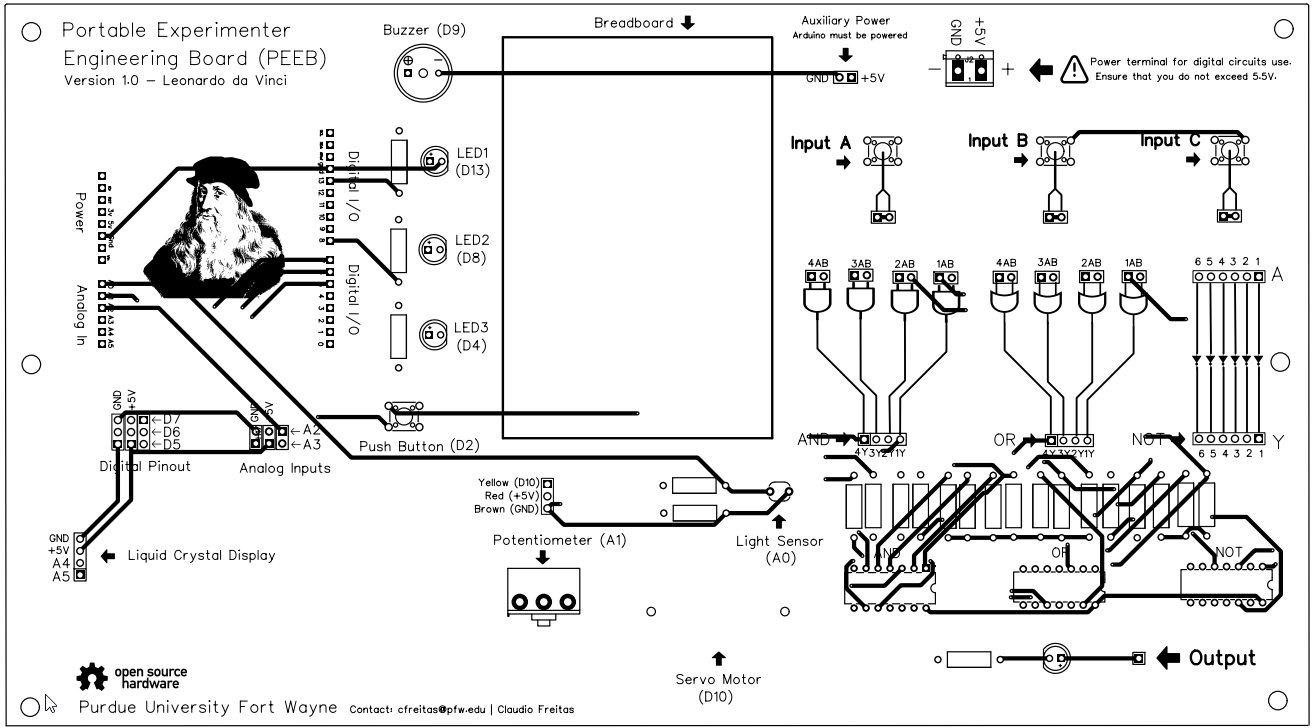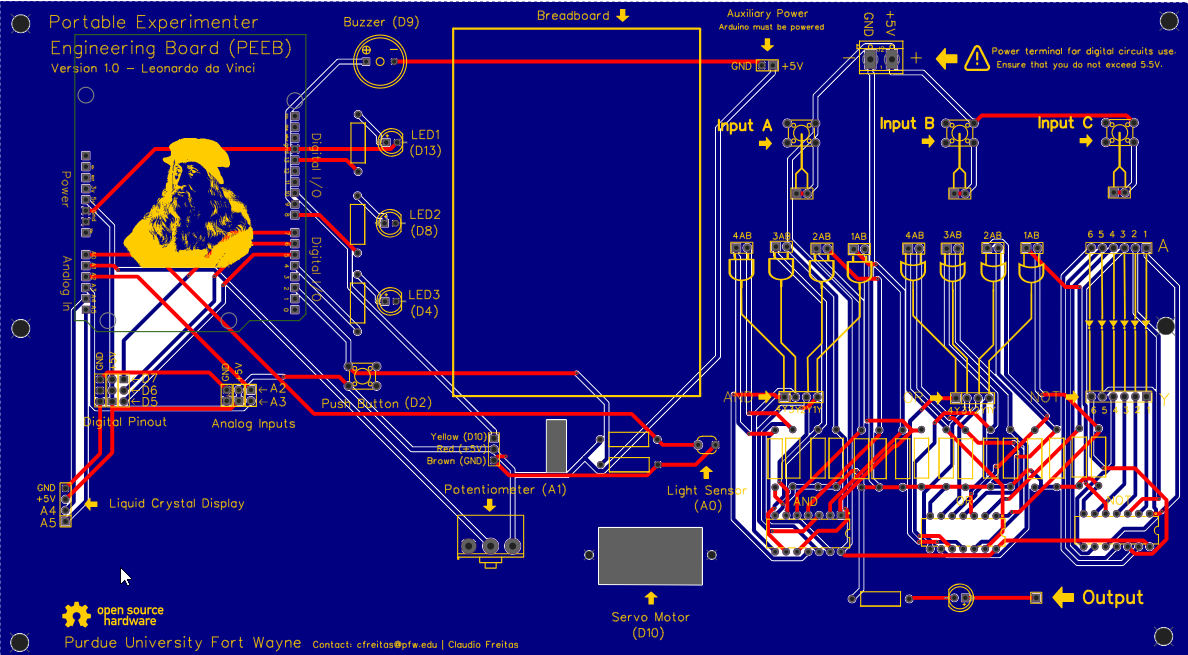PEEB (Portable Experimenter Engineering Board)
This page is dedicated to sharing updates, code, schematics, and other resources related to PEEB, an open-source learning tool developed by Claudio de Freitas, PhD. The PEEB tool is licensed under the MIT license. You are free to use, modify, and distribute this work non-commercially, as long as you provide appropriate credit to the original author.
Background
PEEB (Portable Experimenter Engineering Board) is part of the CREATE platform. PEEB is an open-source and Arduino-based kit developed to provide ENGR128 students with a hands-on experience. With PEEB, students have the opportunity to practice the basics of circuits, digital circuits, and curve fitting. The PEEB logo is represented by Leonardo da Vinci, as he is a symbol of creativity and innovation.

Layout
The layout of PEEB is intentionally designed to be flexible, adjustable, and modifiable to accommodate additional features as needed. It consists of three layers: a top layer where students can work and interact with the system, a mid-layer housing the essential components for the experiment, and a bottom layer containing tools such as multimeters and power sources. This structure allows for easy integration of new functionalities as the course progresses.
Schematic
PEEB was designed to integrate multiple components on a single board, allowing students to become familiar with the circuit as they use the same kit throughout the semester. All components and connections were strategically planned to meet the requirements of the ENGR128 class. Below are some pictures showing the schematics and the circuit.

Software
Download the Version 1.0 of our CREATE Interface, part of the Cyber-Physical Research, Education, And Training Environment (CREATE) platform. This software was developed by Claudio de Freitas, Ph.D. and is licensed under the MIT License.
You can download the executable file by clicking the link below (Note: You need a password to open the ENGR128 model. The password will be available in class.):
 Download Complex Number Experiment (Version 1.0)
Download Complex Number Experiment (Version 1.0)
- Microsoft Edge:
- Click on the download button.
- A message may appear saying "Suspicious download blocked". Click on that message.
- Find the three dots (More Actions) and click on it.
- Select "Keep", then choose "Show More", and click "Keep Anyway".
- Google Chrome:
- Click on the download button.
- If a message appears saying "Suspicious software", click on the message and choose to download the file.
Once the download is complete, click on the file to start the installation. You may see another warning when you try to install. Don't worry! Simply proceed by clicking "More Info" and selecting "Run Anyway" to complete the installation.
Installation Instructions:
- Click the download button above to save the executable file to your computer.
- Locate the downloaded file and double-click to run the installer.
- Follow the on-screen instructions to complete the installation.
System Requirements:
- Operating System: Windows 10 or higher (64-bit)
This software is provided "as is", without warranty of any kind, express or implied. By downloading and using this software, you agree to the terms of the MIT License.
3D model
Our 3D models are also available on our GitHub repository. The 3D model was developed in collaboration with Dale Ruppert (Big thanks!!!). We used TinkerCad to create the 3D model, but you are more than welcome to use any software you prefer to modify and build the 3D model according to your needs.